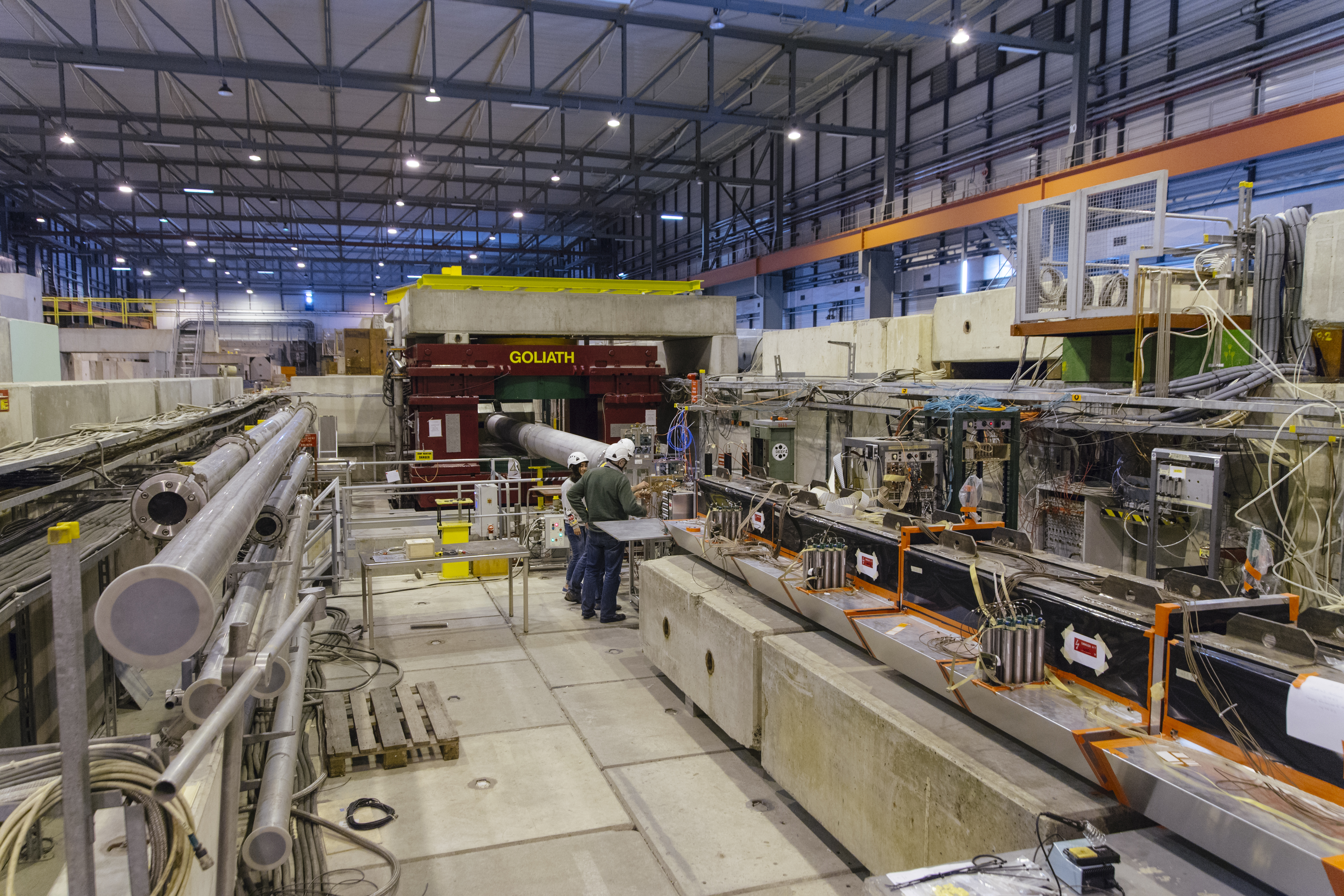NA64 Experiment on:
[Wikipedia]
[Google]
[Amazon]
 NA64 experiment is one of the several experiments at
NA64 experiment is one of the several experiments at
NA64 sets bounds on how much new X bosons could change the electron's magnetism
# https://na64.web.cern.ch/node/10
NA64 explores gap in searches for axions and axion-like particlesNA64 casts light on dark photonsThe plot thickens for a hypothetical "X17” particles
CERN experiments Physics experiments Fixed-target experiments {{particle-stub
 NA64 experiment is one of the several experiments at
NA64 experiment is one of the several experiments at CERN
The European Organization for Nuclear Research, known as CERN (; ; ), is an intergovernmental organization that operates the largest particle physics laboratory in the world. Established in 1954, it is based in Meyrin, western suburb of Gene ...
's Super Proton Synchrotron
The Super Proton Synchrotron (SPS) is a particle accelerator of the synchrotron type at CERN. It is housed in a circular tunnel, in circumference, straddling the border of France and Switzerland near Geneva, Switzerland.
History
The SPS was d ...
(SPS) particle collider searching for dark sector particles. It is a fixed target experiment in which an electron
The electron (, or in nuclear reactions) is a subatomic particle with a negative one elementary charge, elementary electric charge. It is a fundamental particle that comprises the ordinary matter that makes up the universe, along with up qua ...
beam of energy between 100-150 GeV, strikes fixed atomic nuclei. The primary goal of NA64 is to find unknown and hypothetical particles such as dark photons, axions
An axion () is a hypothetical elementary particle originally theorized in 1978 independently by Frank Wilczek and Steven Weinberg as the Goldstone boson of Peccei–Quinn theory, which had been proposed in 1977 to solve the strong CP problem in ...
, and axion-like particles.
Secondarily this experiment will also use the muon
A muon ( ; from the Greek letter mu (μ) used to represent it) is an elementary particle similar to the electron, with an electric charge of −1 '' e'' and a spin of ''ħ'', but with a much greater mass. It is classified as a ...
beams from the SPS with the goal of finding particles that mainly interact with muons and hence could give valuable insights into muon's anomalous magnetic moment
In electromagnetism, the magnetic moment or magnetic dipole moment is the combination of strength and orientation of a magnet or other object or system that exerts a magnetic field. The magnetic dipole moment of an object determines the magnitude ...
. Few other goals of NA64 include searching for invisible neutral kaon
In particle physics, a kaon, also called a K meson and denoted , is any of a group of four mesons distinguished by a quantum number called strangeness. In the quark model they are understood to be bound states of a strange quark (or antiquark ...
decays and meson
In particle physics, a meson () is a type of hadronic subatomic particle composed of an equal number of quarks and antiquarks, usually one of each, bound together by the strong interaction. Because mesons are composed of quark subparticles, the ...
decays, as well as the hunt of particles that could consist the mirror-type dark matter
In astronomy, dark matter is an invisible and hypothetical form of matter that does not interact with light or other electromagnetic radiation. Dark matter is implied by gravity, gravitational effects that cannot be explained by general relat ...
.
References
External links
NA64 sets bounds on how much new X bosons could change the electron's magnetism
# https://na64.web.cern.ch/node/10
NA64 explores gap in searches for axions and axion-like particles
CERN experiments Physics experiments Fixed-target experiments {{particle-stub